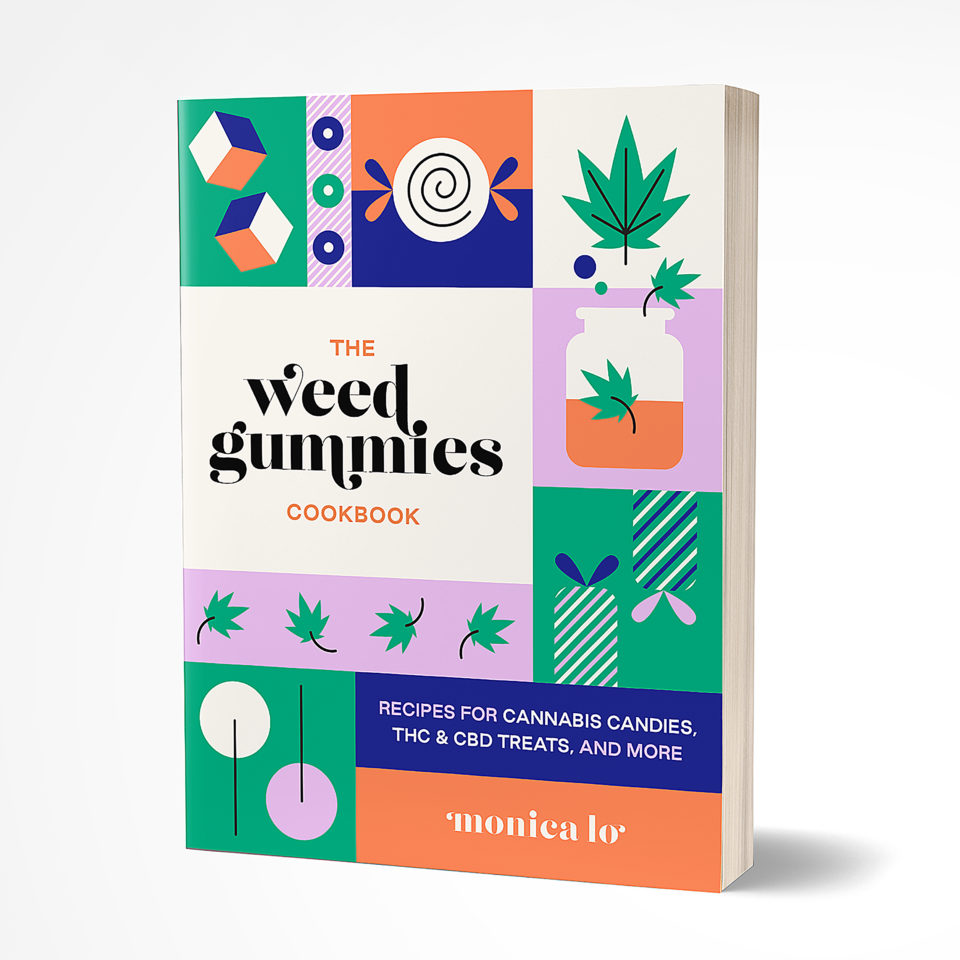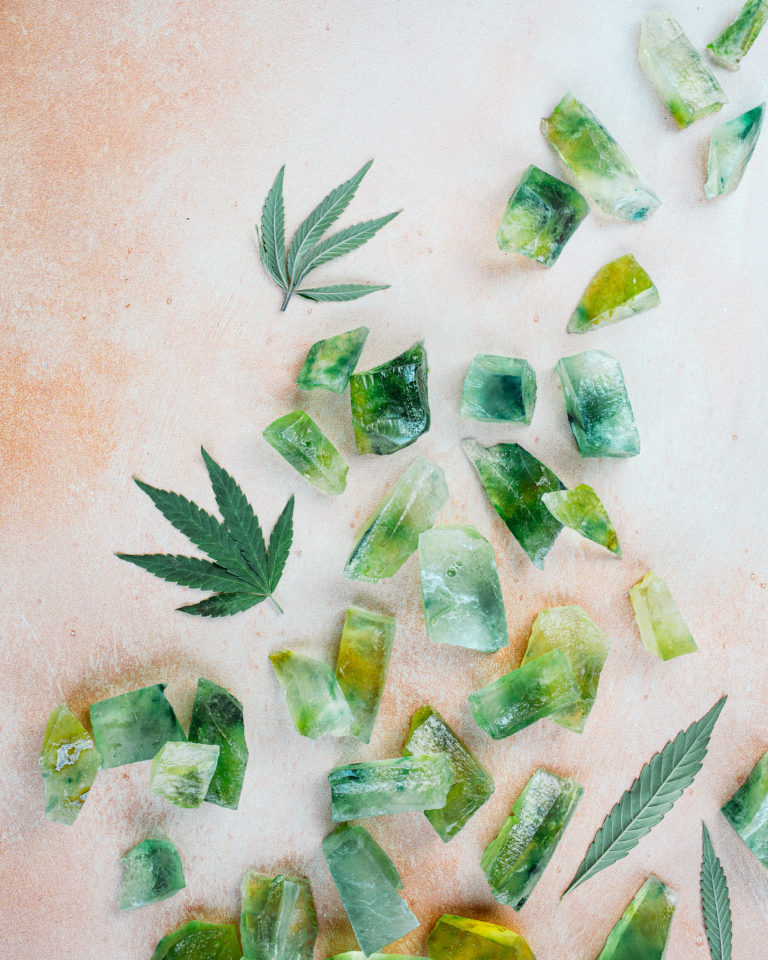As the cannabis industry continues to rapidly evolve, many cannabis professionals end up embracing associations with the coveted plant as a career due to the impact it’s had on their wellness journeys. This rings true for multidisciplinary creative director, author, and cannabis cook Monica Lo, who will release her new cannabis cookbook, The Weed Gummies Cookbook: Recipes for Cannabis Candies, THC and CBD Edibles, and More on Aug. 30.
Lo dabbled with cannabis in college, but her journey with the botanical shifted in 2015, when she suffered a herniated spinal disk during a high-intensity boot camp workout. Mirroring the myriad sentiments from people working to treat their pain, Lo recalled the prescribed mixture of opioids and acetaminophen that “wrecked” her stomach and made her situation “so much worse.”
At her wit’s end, she said she tried an edible given to her by her roommate and slept like a log. From that day forward, she knew she had to figure out how to make her own cannabis-infused edibles.
“Since we lived in a strict no-smoking building, I needed to be discreet about the wafting scent of cannabis,” Lo said. “This meant I had to rule out the Crockpot method or cooking on the stovetop. At the time, I was a creative director of a sous vide startup and thought I’d put our machines to the test—and it worked!”
Sous vide, which means “under vacuum” in French, is a method of cooking that involves vacuum-sealing food in a bag, then cooking it to a precise temperature in a water bath.

Using this process, Lo seals cannabis and cooking oil in an airtight bag and places it underwater to create infusions. Infusing the oil in this way prevented the presence of that tell-tale cannabis smell and allowed Lo to use the infused oil as a base to make multiple cannabis dishes at once.
Creating her own edibles allowed Lo to manage her pain and launch her blog, Sous Weed, where she began documenting her experiences and collaborating with others in the industry, such as farmers, cannabis entrepreneurs, chefs, and edible makers.
Regarding her cookbook’s focus on sweets, Lo referenced the impact of the pandemic on medical and recreational edible consumption. Now more than ever, consumers are choosing edibles (largely gummies and candies) over inhalable cannabis.
A report generated by data-analytics firm Headset shows that sales of edibles have continued to grow in popularity, with gummies dominating the 2021 marketplace in California, Colorado, Michigan, Nevada, Oregon, and Washington state.
“It’s far more cost-effective to make your own infusions and treats at home, especially as dispensary prices are on the rise,” Lo said. “Edibles are a low barrier to entry—everyone eats, and who doesn’t love sweets? Dispensary edibles often have preservatives to extend their shelf life. When you DIY, you can make your edibles without the commercial preservatives and also customize the dosage to your body’s needs.”
Lo’s publishers fully supported her creative vision. In addition to writing the book, Lo designed it herself and shot all of the food photography. The recipes draw upon classic, nostalgic flavors, including a few inspirations drawn from her Asian-American heritage.

“I was pregnant when I signed the book deal, and I delivered the manuscript the same week I delivered my son,” Lo said. “It truly was a labor of love.”
Lo recognizes that many consumers are interested in learning more about cannabis-infused cooking, but might feel intimidated. She points out that many recipes in the cookbook don’t require special equipment—and her alcohol-based cannabis tinctures don’t require cooking at all.
“The Weed Gummies Cookbook is made to be accessible for all levels, and the book is set up by different types of confections. Gummies are by far the easiest; hard candies and brittles require more practice to perfect,” she said.
While many folks might opt to head to their nearest dispensary for edibles, Lo points to the many advantages of cooking at home, aside from saving a bit of cash. Novice home cooks creating their own edibles can control their dose and go beyond dosage limits enforced in dispensaries. Cooking at home also allows people to get strain-specific by using their favorite flower rather than being limited to what the dispensary has in stock, and the options open up immensely.
“Plus, it’s always nice to gift homemade cannabis treats for special occasions and holidays,” Lo said.
Cooking with cannabis also comes with additional considerations, like childproofing and safety labeling, but Lo has that covered in her new cookbook too, with an additional section for educational resources. This section encourages readers to shop responsibly and support BIPOC cannabis brands and organizations.
“I think it’s so important for us to understand the history of cannabis, not just the origins but also how communities of color in the U.S. have been disproportionately harmed by the War on Drugs,” Lo said. “There are far too many people still incarcerated for nonviolent cannabis offenses while so many others are building immense wealth off this plant.”
Lo will also donate a portion of The Weed Gummies Cookbook proceeds to the Last Prisoner Project, an organization dedicated to cannabis criminal justice reform.
As a special treat for High Times, Lo shared the cookbook’s recipe for gemstone gummies, based on a Japanese rock candy called kohakutou.
“It’s a stunning-looking treat with a crunchy exterior and gummy center,” Lo said. “You can really have fun and get artsy by swirling around your favorite colors. Once the gummy is cured, it will form a crystallized crust and look like a gemstone.”
sousweed.com

Gemstone Gummies
Makes 32 pieces
Equipment:
- 8-inch square baking pan
- Fine-mesh strainer
- Toothpicks
- Disposable gloves
Ingredients:
3 cups granulated sugar
6 teaspoons agar-agar powder
2 cups cold water
1/4 cup cannabis-infused sugar*
1/2 teaspoon super-strength candy flavoring of your choice
Food coloring of your choice
Directions:
1. Line an 8-inch square baking pan with a sheet of parchment paper. Crease the corners along the inside edges and leave a 1-inch overhang on each side of the pan. Lightly coat with nonstick spray.
2. Add the granulated sugar, agar-agar powder, and water to a medium saucepan and stir with a silicone spatula to combine.
3. Turn the heat to medium and bring to a boil. Lower the heat and simmer for 8 minutes to activate the agar-agar and thicken the mixture, stirring often. Remove from the heat and add the cannabis-infused sugar and your candy flavoring of choice, stirring until the sugar has dissolved into the mixture.
4. Pour the mixture through a fine-mesh strainer into the prepared baking pan. Using toothpicks dipped in food coloring, make colorful swirls in the mixture while still warm. Transfer to the fridge to cool until firm, 1 to 2 hours.
5. Remove from the pan by pulling on the parchment paper. Slice the slab into eight 1-inch strips. Wearing disposable gloves, roughly rip the gummies into 1 x 2-inch pieces and place onto a parchment paper–lined baking sheet.
6. Allow to dry in the open air at room temperature for two to four days, rotating sides each day, until a hard sugar crust has crystallized on the exterior. Store in an airtight container or candy bags for up to a month.
*The cannabis-infused sugar recipe can be found in The Weed Gummies Cookbook by Monica Lo. Pre-order available anywhere books are sold.
Excerpted from The Weed Gummies Cookbook by Monica Lo, courtesy of Ulysses Press.
This article appears in the July 2022 issue of High Times. Subscribe here.
The post DIY Weed Gummies appeared first on High Times.
Source: https://cannabisworld.biz/2022/07/30/diy-weed-gummies/





